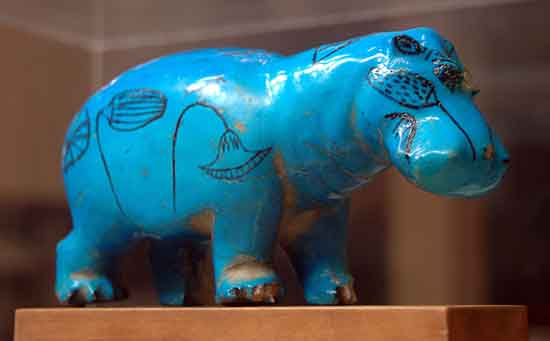
Faience statuette of a Hippopotamus, possibly representing Twarset a goddess of protection and fertility, decorated with Nile flowers - c.1991–1783 BC, 12th Dynasty.
This well-formed statuette of a hippopotamus demonstrates the Egyptian artist's appreciation for the natural world. It was moulded in faience, a ceramic material made of ground quartz. Beneath the blue-green glaze, the body was painted with the outlines of river plants, symbolizing the marshes in which the animal lived. The hippopotamus was one of the most dangerous animals and was a hazard for small fishing boats and other river-craft. The beast might also be encountered on the waterways in the journey to the afterlife. As such, the hippopotamus was a force of nature that needed to be propitiated and controlled, both in this life and the next.